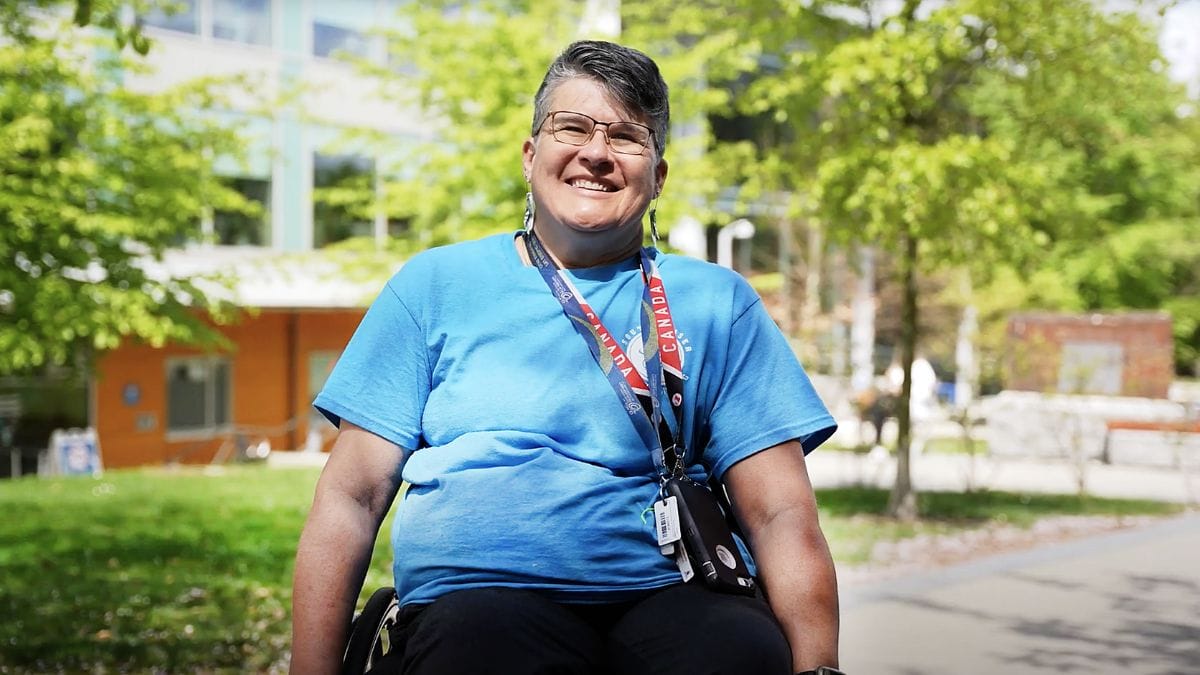Does the “big one” have you worried? Do you find yourself wondering, “What are people with disabilities supposed to do in an earthquake?”. Read on to find out how you can prepare for the unexpected.

ShakeOut, an annual evacuation drill held around North America, is particularly relevant in BC, where we are constantly reminded about the risk of the “Big One”—a long-awaited earthquake that is overdue to hit the south coast of BC and Pacific Northwest.
People with disabilities face unique challenges when it comes to emergency preparation, evacuation, shelter, and the recovery process, according to the Disability Alliance of BC’s booklet, Creating Safe Communities.
Emergency situations jeopardize vital supports and services that a lot of people with disabilities rely on daily, including caregiver service and equipment and assistive devices. Moreover, inadequate evacuation systems and barriers to access may leave people with disabilities stranded and deprived of such essentials as food, water, medical care, and other basic relief.
Unfortunately, people with disabilities are often as unprepared for emergencies as everyone else, but may be far more vulnerable. Recent disasters have demonstrated how often emergency planning overlooks at-risk populations: New York City was found to have violated the rights of about 900,000 of its residents with disabilities (11% of the population) during Hurricane Sandy in 2012 by failing to ensure that people with disabilities were able to evacuate, failing to provide sufficiently accessible shelters, and not adequately informing people with disabilities of the availability and location of accessible emergency services.

US National Guard troops evacuating residents in Manahawkin after superstorm Sandy. Photo: Jeffrey Bruno / Shutterstock.com
Even minor malfunctions that are simple inconveniences to the general population can become emergencies for people with disabilities. The late August windstorm that brought down trees and knocked out power across the Lower Mainland for as long as 30 hours also left elevators and power doors non-functional.
Generalized emergency plans are great, but the needs of people with disabilities are different for each person—it’s impossible for emergency planners to take all disabilities, needs, and living situations into account. That means it’s crucial that each person with a disability take stock of their own needs and required supports, and assess how they can meet those basic needs during an emergency for up to 72 hours, according to the City of Vancouver.
While many emergency plans are one-size-fits-all, there’s a lot people with disabilities can do to plan for emergencies:
1. CREATE A SUPPORT NETWORK
Identify and make a plan with at least three people who are willing and able to help you in the event of an emergency:
- Work with your support network to develop a plan that meets your personal needs and offers the kind of help you will need during an emergency (friends willing to help, equipment suppliers, pharmacies, and medical contacts).
- Tell your support network where your emergency kit is stored and give one of them a key to your home.
- If you live in an apartment, advise the property management that arrangements need to be made should an evacuation be required.
- Practice using your equipment with the support network. If you require assistance using the main evacuation route from your home, such as an evacuation chair, ensure you practice using it as well.
2. PUT TOGETHER AN EMERGENCY KIT
There are many emergency kit checklists available (Emergency Preparedness Guide for People with Disabilities/Special Needs is one of the most comprehensive ones out there) but remember the essentials that are crucial to your own needs:
- A copy of your emergency plan, your self-assessment plan listing your medical conditions and treatment, and the contact information of your support network.
- Medical supplies and medication for 72 hours or longer.
- A wheelchair repair kit (batteries, tire patch kit, seal-in-air product, inner tubes, heavy gloves, etc.)
3. MAKE A POWER OUTAGE PLAN
- Keep extra trickle-charged batteries and plan for medications that require refrigeration.
- If you rely on life-sustaining equipment (ventilator, dialysis, electrical lift, etc.), be prepared to be self-reliant by having adequate backup in the event of a power outage (external battery packs and generators) and notify your regional health authority about your needs.
- Ensure your power company has your current phone number, so you can be quickly identified during an outage.
- Enroll in a medical alert program that will signal for help if you are immobilized.
Get started with your emergency plan with these resources most of which can be found on the SCI BC Information Database:
- Creating Safe Communities addresses the local government’s “duty to accommodate” and provides examples of disability-specific accommodations.

- Emergency Preparedness Guide for People with Disabilities/Special Needs, developed by Public Safety Canada, provides comprehensive emergency kit checklists depending on the type of disability.
- Prepare Your Home for an Outage is a list of recommendations provided by BC Hydro.
- Emergency planning for people with disabilities and special needs is a City of Vancouver resource you can use to make a personalized plan.
- Power Outages — What to do? is a Government of Canada guide on how to prepare for a power outage, and what to do during and after to stay safe.
- Emergency Essentials by SCI BC is a blog with a curated list of things you should always keep in your grab-and-go emergency bag.



